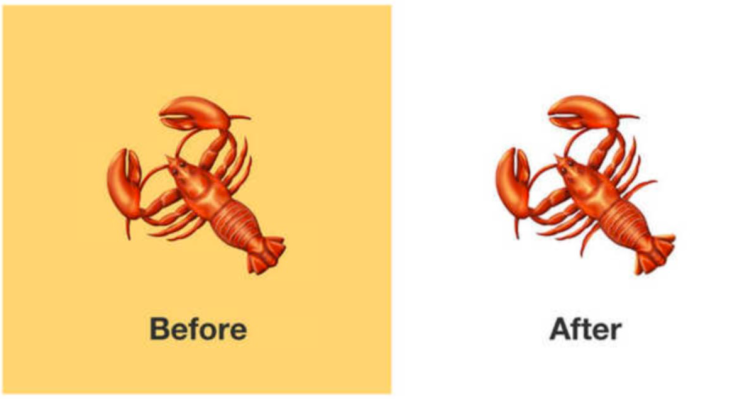Score one for advocates of anatomically correct emojis.
Responding to outrage from lobster leg aficionados and the Accuracy in Emojis movement (OK, not really), the organization that decides which digital images can dress up the world’s emails, texts and tweets has literally given its new lobster emoji two more legs to stand on.
Soon after the Unicode Consortium released proposed images of the 157 new emojis expected to be available in 2018, some folks noticed the little red lobster came up a bit short. Lobsters have 10 legs – including their tasty claws – but the proposed emoji showed only eight legs plus a tail that appeared somewhat malformed.
While a common mistake even among businesses that should arguably know better (ahem, Red Lobster), an eight-legged lobster even in digital cartoonish form didn’t sit well with some people.
“The #lobsteremoji is happening! Hopefully the final version will have the right number of legs,” tweeted the folks from Rockland’s annual Maine Lobster Festival on Feb. 12 above a picture of an anatomically correct, 10-legged version.
Well, the reference site that creates emoji images took note.
“We heard you. We made some mistakes. And we are fixing them,” Jeremy Burge, chief emoji officer at Emojipedia, wrote in a blog post Monday unveiling changes to the digital icons for lobster, skateboards and DNA. Emojipedia designs the sample images for emojis, which are then displayed by the Unicode Consortium.
The new proposed emoji has two more legs just behind the cartoon crustacean’s carapace as well as a slightly tweaked tail.
In an email, Burge noted that Emojipedia’s lobster emoji is just a “sample image” of what could eventually be available. The companies that make the emojis available to users, such as Apple and Adobe, could come up with their own versions.
“I have to say that I’m a bit embarrassed we didn’t get the leg count right the first time, but I’m happy it was brought to our attention so quickly!” Burge wrote. “I hope to visit Maine one day and will be sure to make liberal use of the lobster emoji when I do.”
Of course, Mainers and lobster lovers weren’t the only ones to critique the accuracy of the new emojis. Emojipedia also “fixed” the DNA emoji to show that the double-helix that carries genetic data twists to the right, not to the left as originally proposed. And Burge wrote in his blog post that skateboarding legend Tony Hawk was brought in as an “emoji advisor” to inform Emojipedia’s second attempt at a skateboard after Hawk pointed out a few foibles in the original.
U.S. Sen. Angus King, a Maine independent who pushed hard for an emoji honoring the state’s $500 million commercial lobster fishery, was pleased with the revisions.
“Senator King knows that many around the world were rightly steamed by the exclusion of two legs from the original design, and is grateful that Emojipedia took quick action to ensure that Maine’s delicious decapod will be accurately represented when it crawls onto phones in the coming months,” King spokesman John Faherty said in a statement.
The updated lobster emoji is expected to be available later this year – hopefully in time for Maine tourists to spice up their tweets, snaps and Facebook posts about chowing down on the real thing.
Kevin Miller can be contacted at 791-6312 or at:
Twitter: KevinMillerPPH
____________________
CORRECTION: This story was updated at 1:56 p.m. on Feb. 20, 2018, to say that Emojipedia designs the sample emojis, which are then displayed by the Unicode Consortium.
Send questions/comments to the editors.



